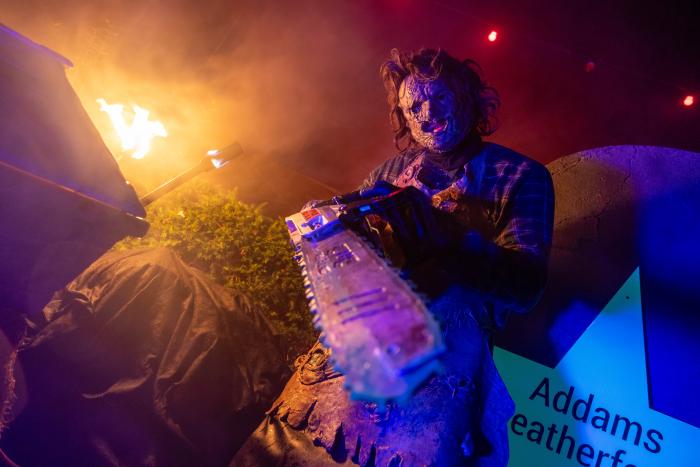By Andrew Sanford | News | September 16, 2025

I first saw The Texas Chainsaw Massacre when I was in high school. The specialty DVD I purchased from my local Coconuts featured a slab of ground beef on the back of the cover, making me wholly unsure what I was in for. I had only heard myths and legends until then, which, coupled with the DVD’s imagery, made me think I would see a giant man, wearing someone’s face, and, presumably, munching on the rest of them.
The idea of Leatherface piqued my young curiosity. I was a child who was frequently too scared of spooky movies before the age of ten (though, to be fair, they were mostly films I shouldn’t have been watching). Around the age of ten or eleven, something in my brain shifted, and I would spend the next decade or two trying to consume every horror flick I could get my hands on.
Finally seeing The Texas Chainsaw Massacre felt like I was checking off an important box, and I was knocked thoroughly on my ass. The brutality and cruelty left me shaken, and by the time Sally escaped on the back of a stranger’s pickup, screaming into the void, I felt like doing the same, and I mean that as a compliment. The experience was invigorating, and sent me on a new quest: finding the “true” events that inspired the film.
The Texas Chainsaw Massacre begins with John Larroquette explaining that the film you are about to see is a true story. Of course, I had to look that up. I needed to know what kind of real horror could have inspired such a horrific picture. I would get my answers, but not the ones I expected. It’s something I think most young people should learn, which is that events proposed as “true” in a movie are not always accurate, and sometimes real life is way worse.
My Dad actually added a bit of color to my search for answers. When I asked if he had heard of The Texas Chainsaw Massacre, he told me he hadn’t seen it, but when he worked as a prison guard in the late 70s (one of the many jobs he’s had in his life), he had heard all about serial killer Ed Gein, who was locked up in a prison near the one that he worked (a dizzying concept). He told me I was probably too young to learn about him. He was right, but I did not listen.
I ventured to our family computer room (remember those?) and searched for all of the information about Ed Gein that I could find, and it was awful. Kim Henkel, who co-wrote the movie with director Tobe Hooper, has cited Gein as one of many inspirations for the film, but his name is often the one that stands out. Still, seeing a collection of bones and skin in Leatherface’s old home is nothing compared to reading about Gein’s crimes.
What that man did goes beyond horrific. He was not only a murderer but a grave-robber and necrophiliac as well. I still remember reading that he had bowls made out of skulls and a necklace made of genitalia, which sounds so insane you’d think it was apocryphal. It isn’t. The man was an absolute monster, and Leatherface honestly pales in comparison.
However, it’s impossible not to compare them, as they’ve become indelibly linked. Look no further than the trailer for Ryan Murphy’s newest iteration of Monster, which features Charlie Hunnam playing Gein (albeit a handsome version), and you will see fact and fiction blend. Murphy leans so hard into the comparisons that we even see a shot of someone (presumably Gein) swinging a chainsaw around like Leatherface, even though the chainsaw was added to that film because Tobe Hooper once felt a hardware store he was in was too crowded.
That isn’t the only pop culture nod in the trailer, as Gein has inspired many others. Clear references to Psycho and The Silence of the Lambs are made, giving the whole thing a kind of schlocky feel. It’s pretty gross. While those other films (and the books they were based on) created characters inspired by Gein’s actions, showing him as some hunk murdering folks in stylish lighting with a funky backbeat feels skeevy as hell.
I don’t know what I expected. Hearing that Hunnam was cast was already a bit of a red flag. Gein did not look like a movie star. He was a certifiable creep, inside and out. A monster, if you will. Despite not being about him, something like The Texas Chainsaw Massacre feels like a better representation of his legacy, not a sleek-looking Netflix miniseries that gives him a six-pack and a nice smile, and makes him look like some pop culture-inspiring icon (though I guess the latter is at least moderately true).